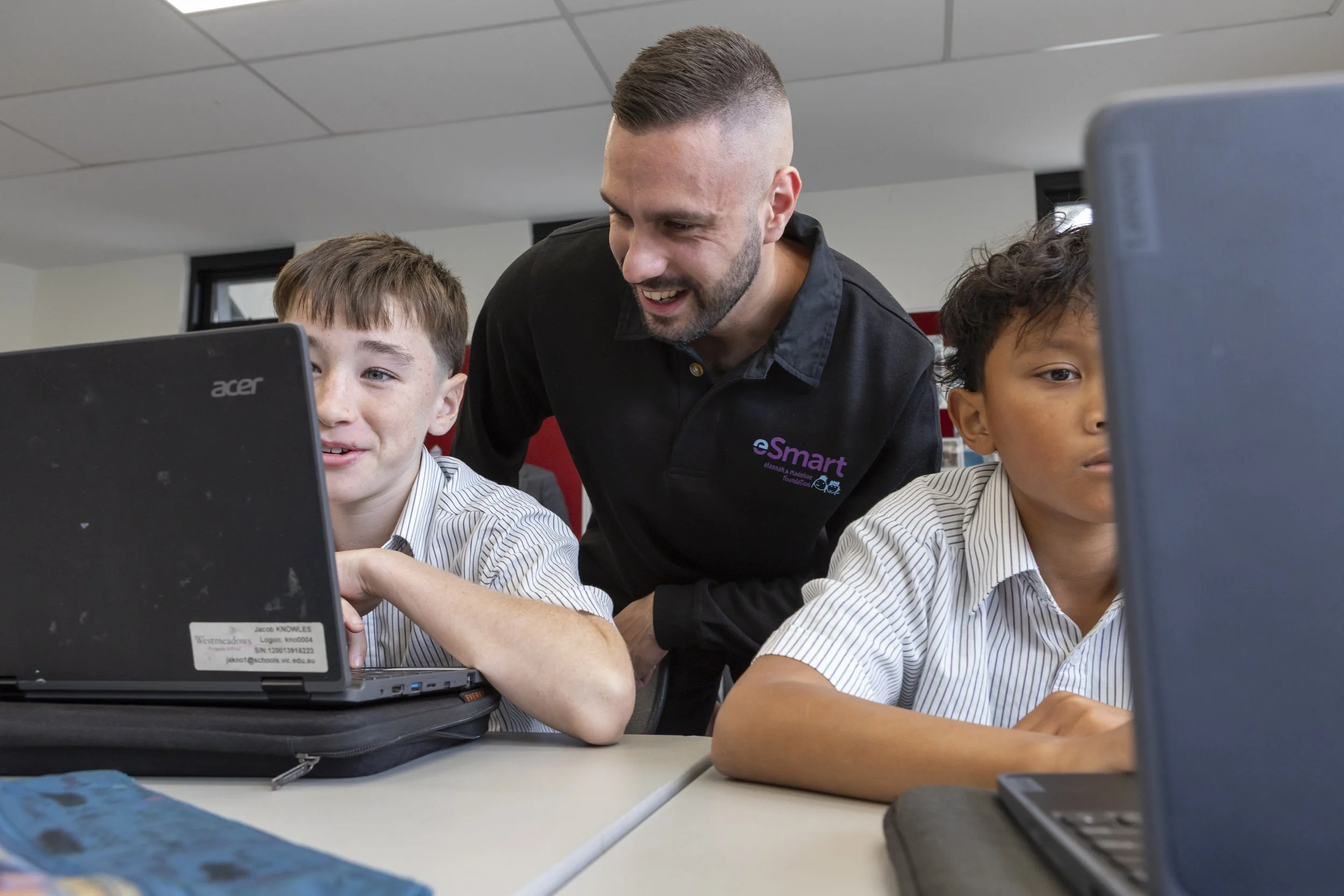Online safety: Using the 4Cs framework to identify risk
Written by Peta Simpson, eSmart Engagement Manager, The Alannah & Madeline Foundation
When someone mentions online-safety risks for children and young people, what do you think of? If you’re like most people, your mind probably goes straight to AI, online bullying, scams and sexual grooming. Those are all real problems, but they represent only the visible harms of digital technology – the tip of the iceberg.
Visible harms and invisible systems
This doesn’t mean that everything online is dangerous or harmful. On the contrary, digital tech holds many benefits for young people, including valuable opportunities for learning and connection. For example, online communities can help teens find their tribe, especially those who live in remote and rural communities or those who belong to a minority. And young people today have a wealth of information and resources at their fingertips that would have been unimaginable one or two generations ago.
When we talk about visible harms being the tip of the iceberg, what we mean is that those harms are not random or isolated – they are the end product of systems and processes that exist everywhere online but are usually invisible.
Unfortunately, despite its many benefits, the internet was not designed with children’s safety in mind. The underlying business model prioritises the financial interests of the Big Tech companies, and these rarely align with children’s wellbeing. While policymakers are working to improve this, they still have a long way to go, and the technology continues to evolve at a rapid pace. This means that the guardrails are not yet in place to make the internet a child-friendly environment.
When we try to tackle a particular problem that arises online – like an instance of online bullying – we’re not going to create an effective, lasting solution until we can see the bigger picture. eSmart is designed to help young learners be safer, smarter and more responsible online by making the invisible visible. Through engaging, regularly updated lesson plans, eSmart supports children and young people (along with educators, parents and carers) to understand where the risks emerge from and how to safeguard against them.
The 4Cs framework
The eSmart Digital Licence Program uses the 4Cs framework to identify four key risk areas of technology use: Content, Contact, Conduct, and Compulsion.
Content refers to graphic or harmful content that young people are exposed to online. This includes sexually explicit or violent images, mis- and disinformation, and anything else that young minds are not developmentally ready to deal with.
Contact refers to online interactions initiated by others, whether they are real people or automated systems like AI. This includes messages from strangers or suspicious accounts.
Conduct is about how people behave online, including how they communicate and what content they share. Online, people might speak and act without the respect, empathy or caution they would use in face-to-face interactions, and this can have serious real-world consequences.
Compulsion is the pull to stay logged on for longer and longer periods. We might keep scrolling or gaming even when it’s making us feel bad, and we can start to lose a healthy balance between online and offline activities.
Each lesson in the eSmart Digital Licence series falls into one of these four categories. The lessons are designed for learners aged 4-12, with activities and resources tailored to each age group. Learners are led through the lessons by their teacher, completing one lesson from each risk area to obtain their Digital Licence.
eSmart supports young learners to thrive online
Despite understandable misgivings around the risks, Australians recognise the central role that digital tech plays in our children’s lives and the need for education focusing on online safety and digital literacy starting at an early age. This is why the Australian Government has made eSmart free for all Australian schools.
To become fully digitally literate, children and young people need to be able to see both existing digital threats and the underlying systems that create those threats. eSmart helps them build the knowledge, skills and confidence they need to do that.
To find out more and to start using eSmart resources for free, visit our website.

